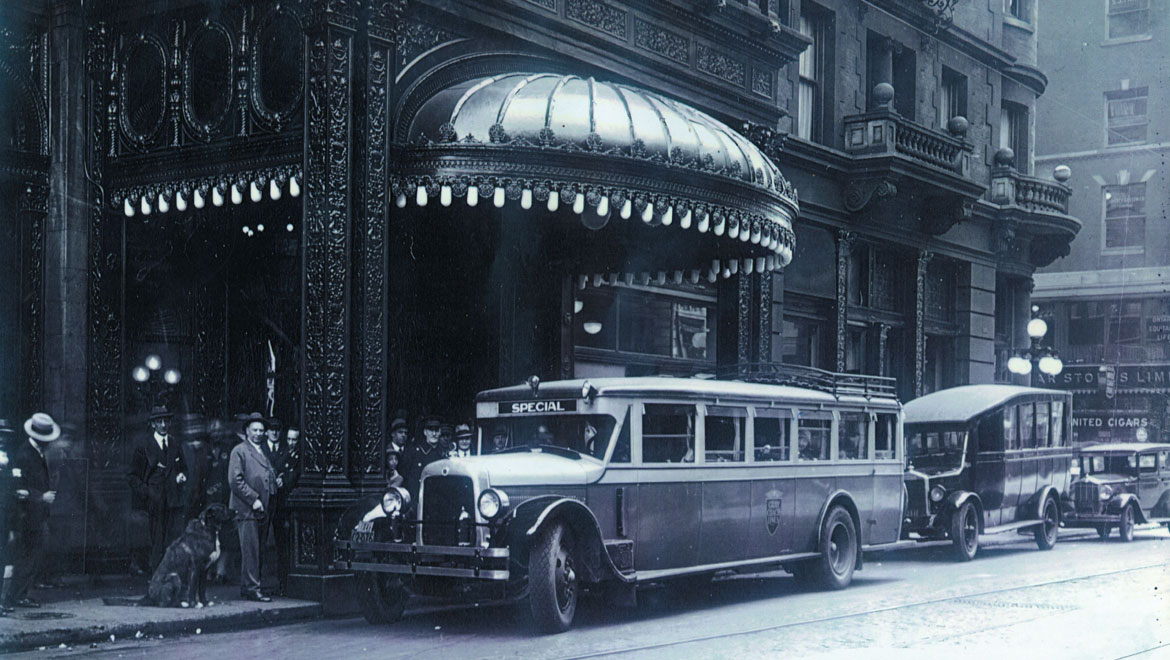History Of The Omni King Edward Hotel


In 1903, Toronto ushered in the era of "palace hotels" with the debut of the King Edward Hotel, aligning itself with distinguished counterparts in New York, London, Paris, Quebec, and Montreal. Conceived before Queen Victoria's passing and materialized during Edward VII's reign, the Edwardian age infused opulence into Toronto, earning it the title of Canada's Queen City. Despite lacking the grandiosity of London or New York, the hotel distinguished itself through superior construction, boasting a substantial investment exceeding three million dollars. Marketed as "absolutely fire-proof" with modern conveniences, including telephones and private baths, the King Edward Hotel became a symbol of luxury at the heart of the city. As it swiftly evolved into an iconic landmark, it played host to the local elite, shaping Toronto's identity as a city synonymous with sophistication.
As the Victorian era waned, Toronto's elite sought grand hotel experiences beyond their Queen's Hotel on Front Street. In 1899, financier Aemilius Jarvis initiated the Toronto Hotel Company, aiming to build a "palace hotel." George Gooderham, a notable figure in Canada's financial landscape, assumed leadership, eventually becoming the company's President. Despite initial challenges, the King Edward Hotel's success was attributed to Gooderham's timely support. The collaboration between architects Henry Ives Cobb and E. J. Lennox resulted in a bold and transformative design, emphasizing both grand schemes and intricate details. Lennox, known for his hands-on approach, completed the project in just 18 months, adding two top floors and a distinctive green-painted iron porte-cochere.
On May 11, 1903, the King Edward Hotel quietly opened its doors, marking the beginning of its storied history. George Gooderham, the primary financier, was the first guest, followed by notable figures like E.J. Lennox. The inaugural guest, John A. Davidson of Chicago, marked the start of the hotel's instant success, particularly during "race week" leading up to the Queen's Plate on May 23rd. The formal opening on May 22nd, featuring the Royal Canadian Yacht Club Ball, showcased the hotel's grandeur, with a naval-themed ballroom and lavish supper, leaving a lasting impression on the city's elite.
The King Edward Hotel embraced an extravagant decorating style known as "Edwardian Baroque," characterized by opulent materials, Beaux-arts neoclassicism, and grand gestures. Led by E. J. Lennox, the hotel's signature public space, the two-story Rotunda, displayed rich colors and intricate detailing. Edwardian-themed murals in the central Rotunda depicted characters from Canadian history, contributing to the hotel's vibrant atmosphere.
In its heyday, the hotel's music scene was curated by Luigi Romanelli, a classically trained violinist. From 1918 to 1942, Romanelli's orchestra became a fixture, ranging from classical concerts to hot jazz. The addition of a skyscraper in the roaring twenties, despite its utilitarian design, brought modern amenities, including private bathrooms. The Crystal Ball Room on the 18th floor became a standout feature, hosting grand events and preserving the hotel's charm.
The King Edward Hotel became a focal point for celebrity visits, from Johnston Forbes-Robertson in 1910 to the sensational arrivals of Richard Burton and Elizabeth Taylor in 1964 and the Beatles in 1964. The hotel witnessed historical events like CKGW's broadcast in 1928 and hosted the Beatles during their whirlwind 30-hour stay in 1964. John Lennon and Yoko Ono's visit in 1969, part of their "bed-in for peace" campaign, added a new chapter to the hotel's legacy.
Despite financial challenges during the Great Depression, the King Edward Hotel persevered, embracing the return of alcoholic beverages in 1934. The hotel faced changing times and evolving trends, adapting with modern amenities while preserving its historical identity. The hotel was then sold in 1950 and presented a contemporary image, reflecting the changing landscape of the hospitality industry.
In 2003, heritage advocates commemorated the King Edward Hotel's Centenary, highlighting its enduring legacy.
Omni Hotels & Resorts began managing, partners and operating the infamous King Edward Hotel in August of 2013. In fall of 2016, it announced the company had fully acquired the “Omni King Edward Hotel,” Toronto’s first and most fabled luxury hotel.
Toronto’s first luxury hotel gets restored to it’s palace-like grandeur in 2015. The extensive renovations began in the fall of 2013 and finalized in September of 2015. All 301 guestrooms and suites were refreshed to blend regal elegance with modern amenities, complete renovations to the Vanity fair Ballroom with the addition of a four large teardrop crystal chandeliers, updates to the Windsor Ballroom, a restored lobby as a new classic contemporary furnishings and the revitalization of two restaurants: Victoria’s Restaurant and the Consort Bar.
In 2017, the Omni King Edward’s Crystal Ballroom opened it’s doors following a $6.5 million dollar renovation. The timeless space maintained it’s characteristic features: ornate moldings, 12-meter high coffered ceilings and floor-to-ceiling windows with panoramic views of the city. Located on the 17th floor, it originally opened its doors to public acclaim in 1922 and quickly became a picture of luxury. At the height of the Roaring Twenties and until its closure in the 1970s, it was the most sought-after venue for high-profile events and galas.
Today, The Omni King Edward Hotel proudly continues the legacy, preserving a regal icon of Toronto's history.

